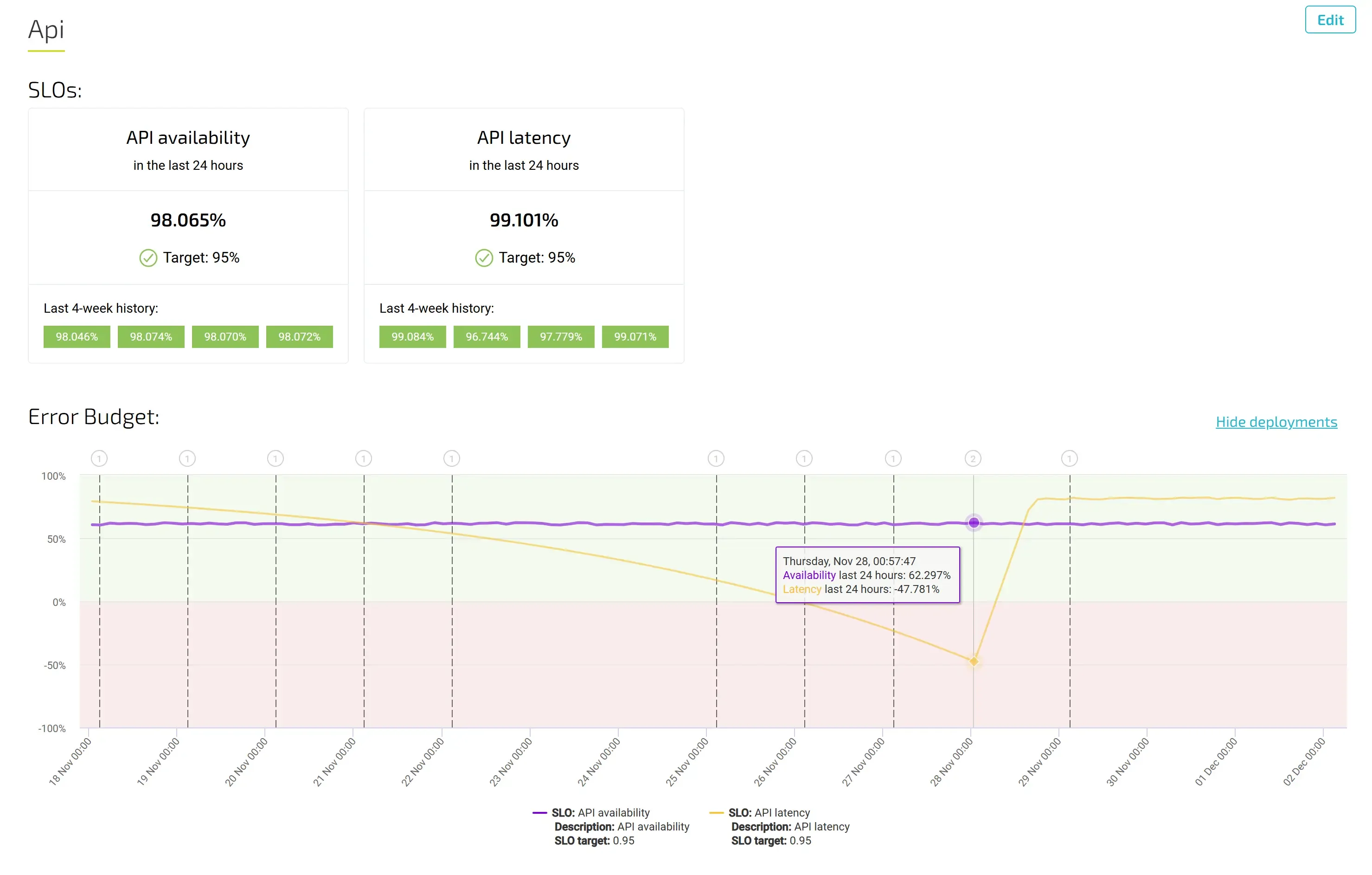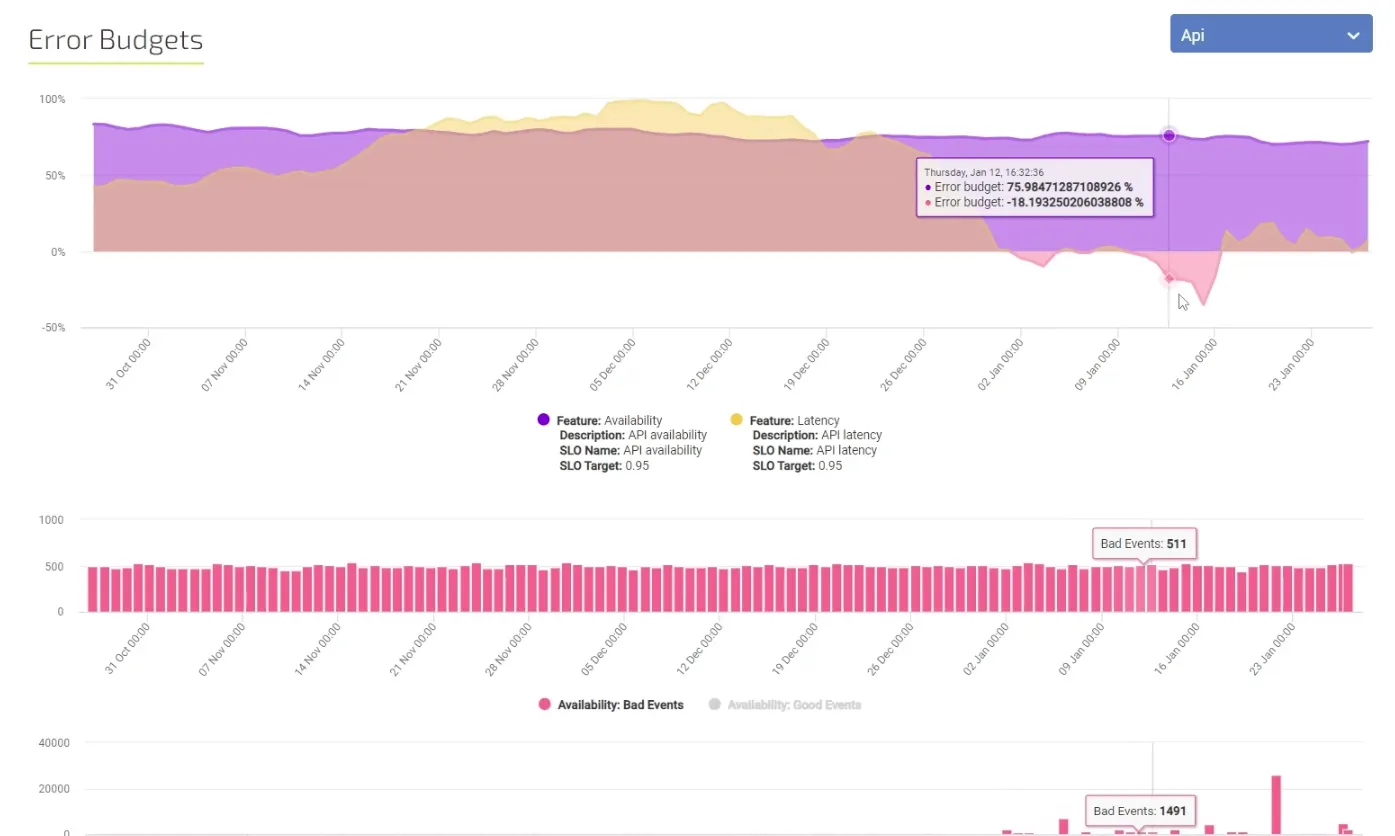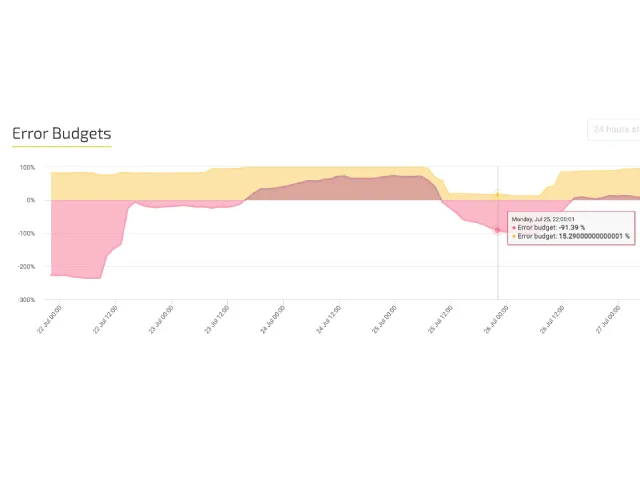Measuring Error Budgets p.1: Determine the acceptable level of errors

Published on 13 December 2024 by Zoia Baletska

The first step in measuring error budgets is to determine the acceptable level of errors or bugs for your software development project. This will depend on the specific requirements and goals of your project, as well as the expectations of your users. A financial application, for example, may require a lower level of errors compared to a gaming app.
Defining an acceptable level of errors for your software can be a complex task that requires careful consideration of various factors. Here are some steps to help you determine an acceptable level of errors for your software:
-
Understand your software's purpose: Different software projects have different requirements for error tolerance. For example, medical software must have a much lower tolerance for errors than a social media app. Understand the purpose of your software and the potential impact of errors on its users to determine an appropriate level of error tolerance.
-
Analyze historical data: Review historical data on error rates for similar software projects to help determine an appropriate level of error tolerance for your software.
-
Define the impact of errors: Identify the potential impact of errors on your software's users, such as lost productivity, lost revenue, or safety risks. Use this information to establish an acceptable level of error tolerance.
-
Involve stakeholders: Involve stakeholders in the process of defining an acceptable level of errors for your software. This includes developers, testers, product owners, and end-users. Each stakeholder may have a unique perspective on what constitutes an acceptable level of errors for the software.
-
Continuously review and adjust: Once an acceptable level of errors has been established, regularly review and adjust it as necessary. As your software evolves, so do your requirements for error tolerance.
There is no universally accepted standard for an acceptable error rate in software development. The acceptable error rate can vary depending on the type of software being developed, the complexity of the system, and the requirements of the project stakeholders. In general, lower error rates are better and reflect higher-quality software. However, it is important to balance the desire for lower error rates with the need for timely delivery of the software and the availability of resources. The acceptable error rate should be defined based on the specific needs and constraints of the project.
For example, an e-commerce website may have an acceptable error rate of 1%, which means that only 1 out of every 100 transactions should result in an error. This would be reflected in their SLO, which could be set at 99% availability. Any time the website goes below 99% availability, it is considered to have exceeded its error budget.
Remember that the goal of defining an acceptable level of errors is not to eliminate all errors, but rather to ensure that the level of errors is within an acceptable range for your software's purpose and users.
Don’t forget to check out other steps for measuring your team's Error Budgets.

Error Budgets in Agile Analytics
By using Agile Analytics, you can easily measure your team's error budget in real time and make data-driven decisions to prioritize tasks and improve team performance. With a free 60-day trial, you can discover how Agile Analytics can help you optimize your development process and deliver better products to your customers. Don't miss this opportunity to take your software development to the next level.
Try it out for free
Experience full access to Agile Analytics with our 60 days free trial. Including assistance in onboarding. No creditcard required.




